Cascadia Research will be undertaking a field project off the island of Kaua‘i in early August. This will be our 15th field project working off Kaua‘i, and our 10th year of working off the island since our first trip here in 2003 (our last field project off Kaua‘i was in February 2016. This project is funded by U.S. Pacific Fleet through the Marine Species Monitoring Program and by a NOAA Species Recovery Grant to the State of Hawai‘i.
There are two main objectives of the project. The first is to try to obtain information on movements and behavior of a number of species of toothed whales before, during and after a Navy Submarine Commanders Course, through the deployment of depth-transmitting satellite tags. Such tag deployments give us information on movement patterns as well as exposure and potential responses to mid-frequency active sonar (MFAS). This is a continuation of work we’ve been undertaking the last few years, and reports on MFAS exposure and response of several species of whales and dolphins are available for February 2011 through February 2013 and August 2013 through February 2015. The second main objective is to find and learn more about the endangered main Hawaiian Islands insular population of false killer whales, to help understand seasonal and inter-annual variation in movement patterns. As we do during all of our field projects, we will also be obtaining photos from most species of odontocetes we encounter, to contribute to ongoing studies of residency patterns and social organization and to estimate population sizes, and collecting biopsy samples for toxicology and genetic studies.
Like other projects off Kaua‘i in recent years we expect to have higher encounter rates than normal since we’ll be working in collaboration with the Marine Mammal Monitoring on Navy Ranges (M3R) program, using the Navy’s hydrophone range off Kaua‘i (see map below) to localize animals. When on the water we will be in constant contact with Navy researchers from the M3R program to help direct us to groups that they are detecting acoustically. This will allow us to confirm the species (to aid in using the acoustic range for research purposes on different species), and should make it much easier for us to find groups of whales and dolphins for tagging, photo-ID and biopsy sampling.
Species that we are hoping to satellite tag include rough-toothed dolphins, bottlenose dolphins, false killer whales, short-finned pilot whales, melon-headed whales, pygmy killer whales, sperm whales, Cuvier’s beaked whales, and Blainville’s beaked whales.
The research team includes Daniel Webster, Elise Walters, Kim Wood, and Colin Cornforth, and a number of volunteers.
End of field project update
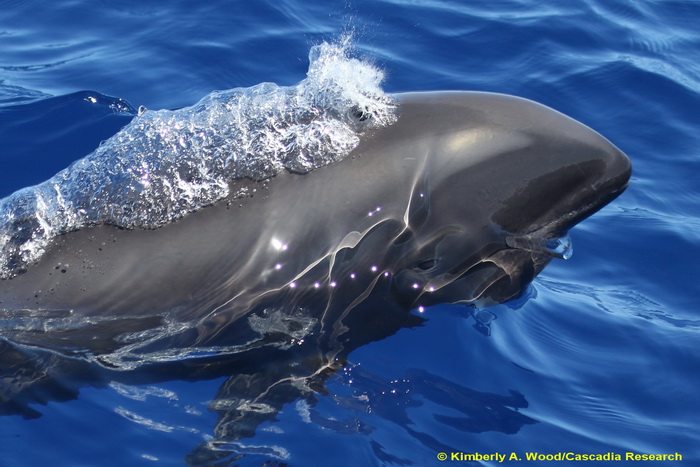
Over the 11-day field project we covered 1,113 km of trackline off Kauai, and had 35 sightings of six species of marine mammals: 22 sightings of rough-toothed dolphins, five sightings of bottlenose dolphins, four sightings of melon-headed whales, two sightings of spinner dolphins, and one sighting each of pantropical spotted dolphins and a Hawaiian monk seal, took over 38,000 photos, deployed six satellite tags, and collected eight eDNA samples (of four species) and three biopsy samples. The above photo shows one of almost 300 melon-headed whales encountered on August 13th.
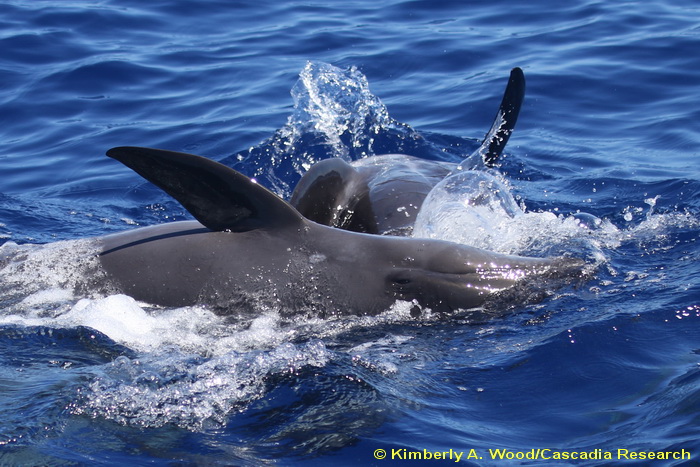
Melon-headed whales socializing, August 13th, 2017. We were able to deploy two satellite tags on individuals in this group, so are hoping to be able to track their movements over the next couple of weeks.
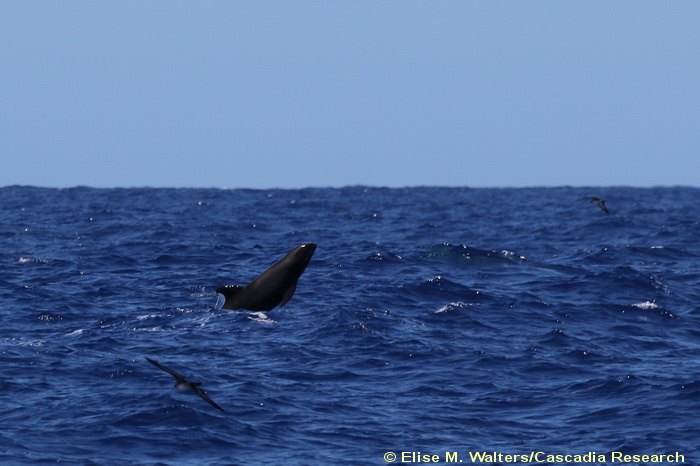
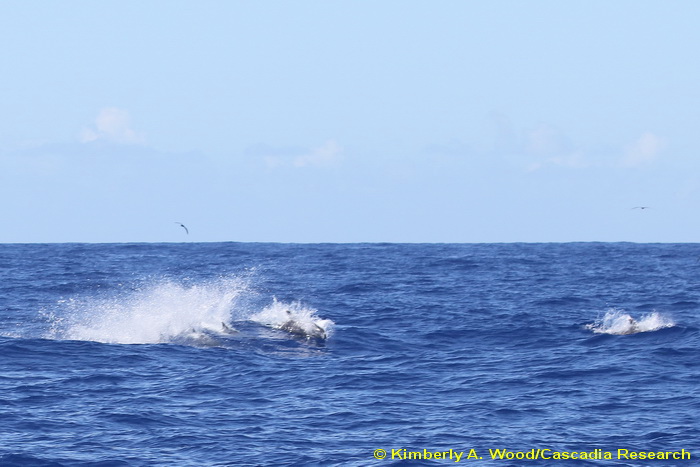
On our last day on the water we encountered a group of about 200 melon-headed whales, but the whales were rapidly traveling and were not approachable or interested in the boat.
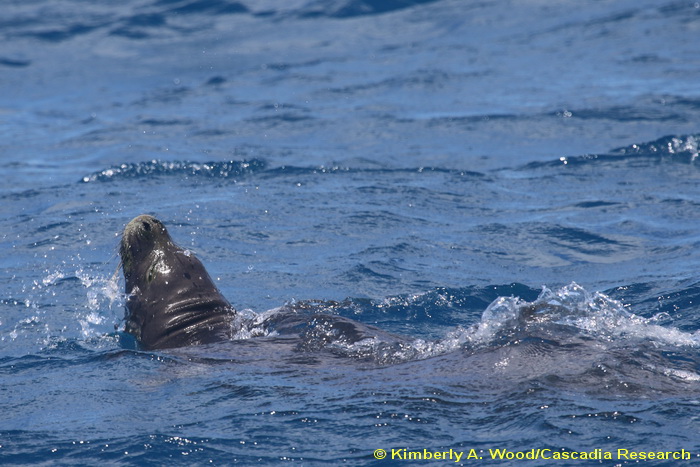
A Hawaiian monk seal documented on August 12th, 2017.
August 12th update
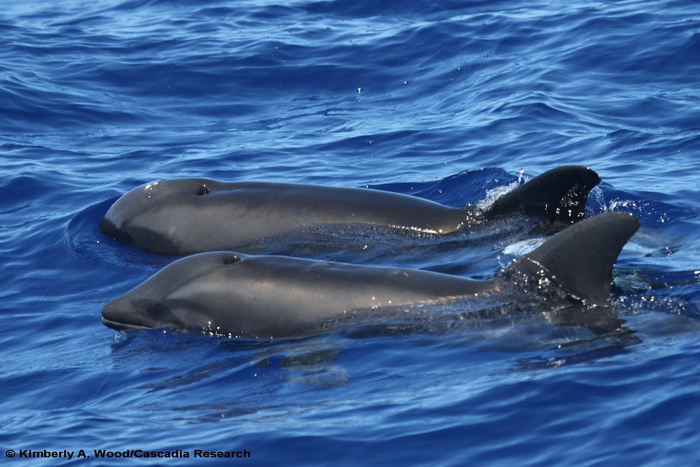
The most interesting sighting of the last couple of days was a re-sighting of the same pair of melon-headed whales earlier this trip (also with rough-toothed dolphins again), but this time we were able to get a good head photo of one of the two, and it appears that it may be a hybrid. Instead of the rounded profile of the head typical of a melon-headed whale, this individual has a sloping forehead that is reminiscent of a rough-toothed dolphin. The dorsal fin shape is typical for a melon-headed whale, while the pigmentation pattern contains features of both rough-toothed dolphins and melon-headed whales (see below).
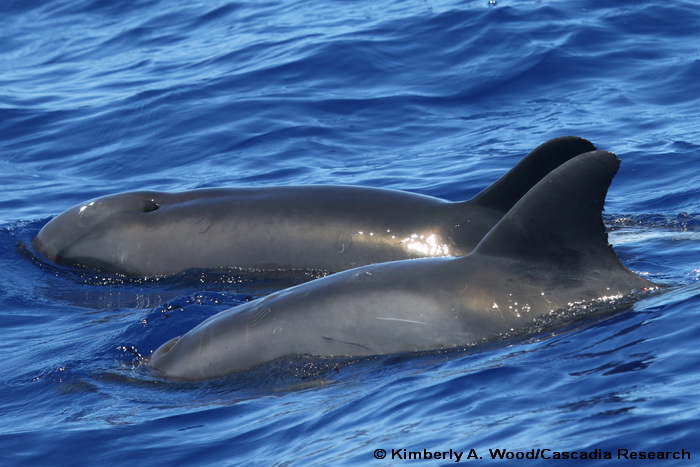
Another photo of the possible hybrid. The darker dorsal cape extends ventrally at a fairly steep angle, typical of a melon-headed whale, while the individual also has the typical blotchy pigmentation of a rough-toothed dolphin on and just below the dorsal fin. We were able to collect a biopsy sample of the possible hybrid, so should be able to confirm with genetic analyses whether it is a hybrid. Hybrids often occur between different species of whales and dolphins – in Hawaiian waters we’ve previously documented a hybrid between a common bottlenose dolphin (Tursiops truncatus) and an Indo-Pacific bottelnose dolphin (Tursiops aduncus). For more information on hybrids check out this paper on Dall’s x harbor porpoise hybrids in British Columbia and Washington state.
August 10th update
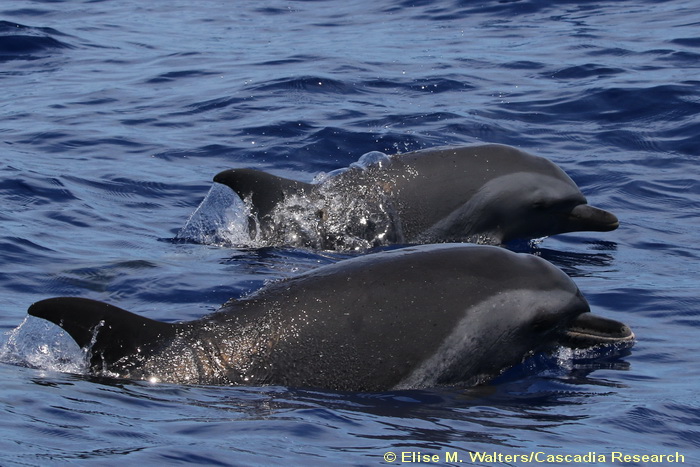
Over the last two days there have been eight more sightings of rough-toothed dolphins and two more sightings of bottlenose dolphins, but by far the most unusual sighting was a group of about 50 pantropical spotted dolphins. For those who spend time on the water elsewhere in the Hawaiian Islands spotted dolphins are a common sight, and they represent almost a quarter of our sightings of dolphins and whales off other islands. But off Kauai and Niihau they are quite uncommon – we had one group during our February 2016 effort but overall they represent only about 2% of the odontocete sightings off the island. We were able to deploy two satellite tags on individuals in this group, so should be able to determine whether they are part of a pelagic, open-ocean population, or stragglers from one of the other island populations.
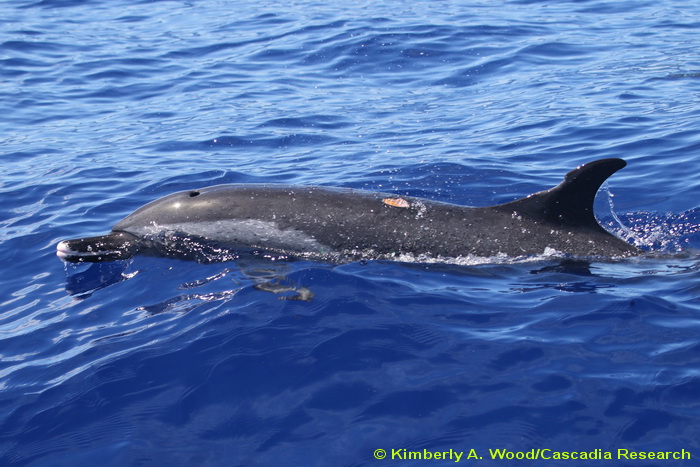
This individual pantropical spotted dolphin is very distinctive, with an injury on the leading edge of the dorsal fin. The oval wound on the back in front of the fin is a partially healed bite from a cookie-cutter shark.
August 8th update
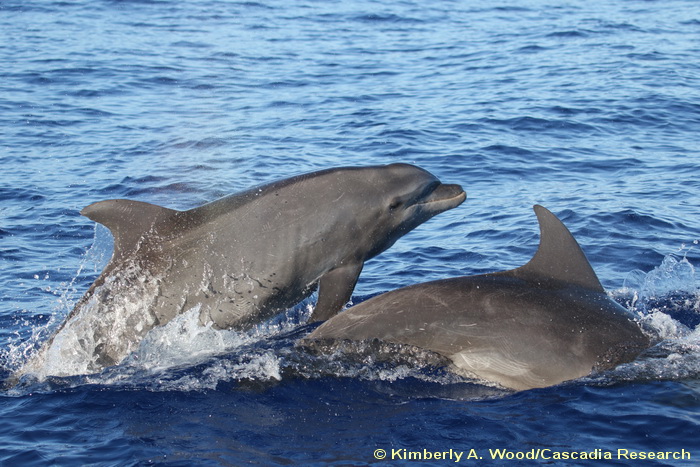
After five days on the water off Kaua‘i we’ve encountered four species of cetaceans, about what you’d expect for this area and the typical conditions experienced. On August 8th we had a group of seven bottlenose dolphins, and were able to get good ID photos of all seven. There is a small resident population of bottlenose dolphins off the island so we are likely to find a number of individuals that are already in our catalog.
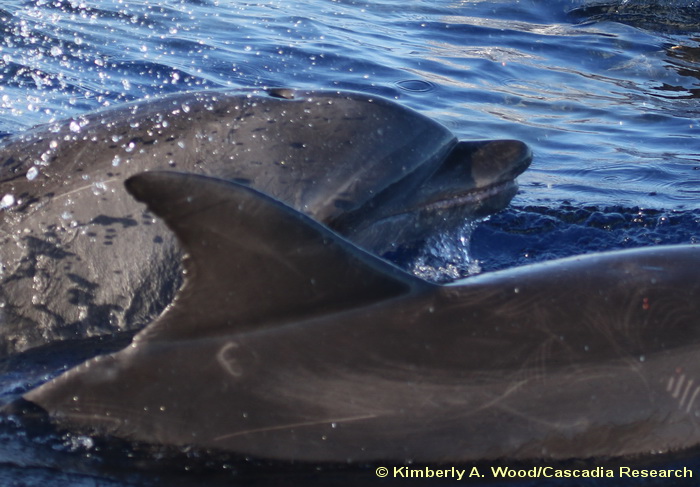
One of the individuals had a deformed rostrum, visible in the photo above.
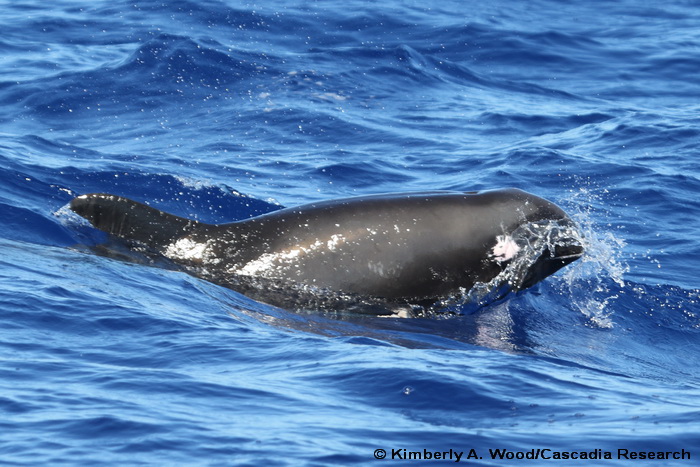
The most unexpected sighting of the trip so far were a pair of melon-headed whales, associating with a group of rough-toothed dolphins on August 7th. The last time we encountered melon-headed whales off Kaua‘i was in June of 2008, and we’ve only had four sightings off the island since our first trip there in 2003. Melon-headed whales are typically found in very large groups in Hawaiian waters – our previous sightings off Kaua‘i and Ni‘ihau were of groups ranging from 200 to 340 individuals. This individual has a large white scar on the side of the head, from an unknown source.
Unfortunately we were not able to get close enough to tag either of the melon-headed whales, although we did deploy a satellite tag on a rough-toothed dolphin, so are getting movement information from that individual.
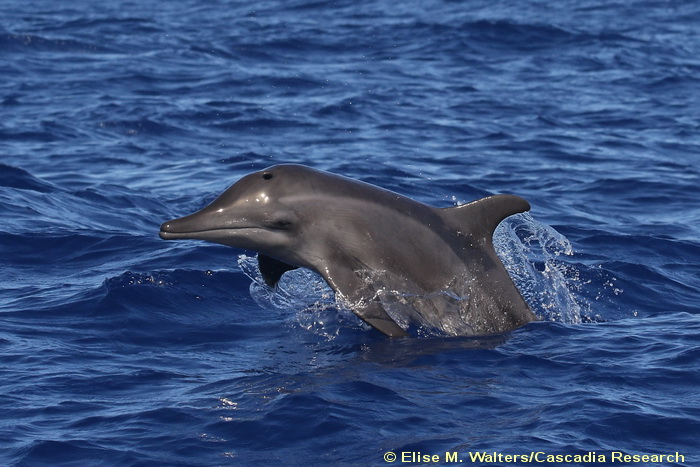
A juvenile rough-toothed dolphin leaping off Kaua‘i, August 7th, 2017.
August 4th update
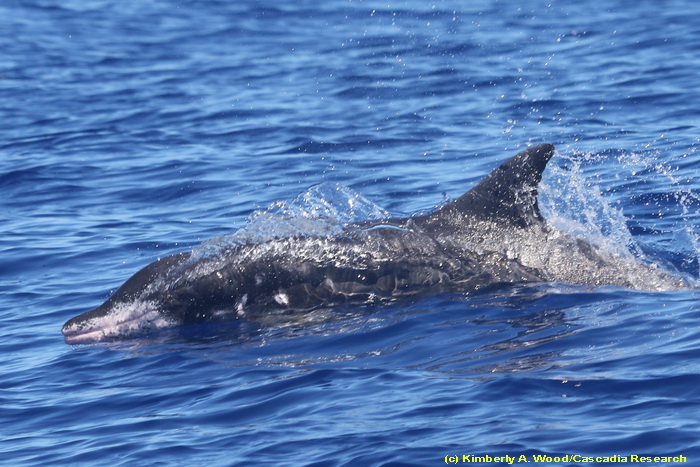
Today was our first day on the water. We encountered a group of rough-toothed dolphins and were able to get ID photos of a number of individuals. Rough-toothed dolphins are the most frequently encountered species of dolphin in our work off Kaua’i, with a resident population that uses the slopes waters around Kaua’i and Ni’ihau. But the highlight of the day was an encounter with a friendly whale shark, the first sighting of a whale shark for several of the crew on board! We don’t see whale sharks in Hawai’i very often, typically just one every couple of years.
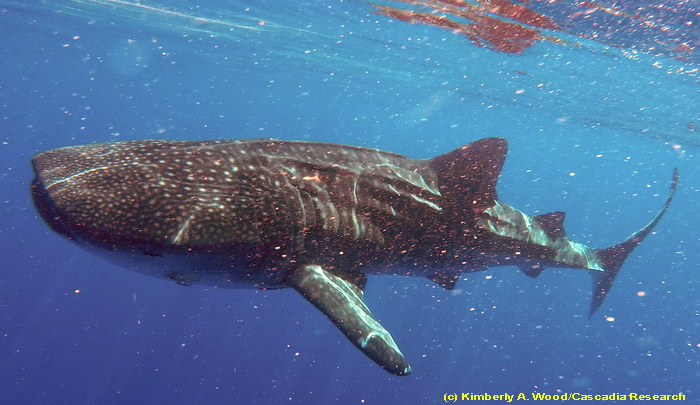
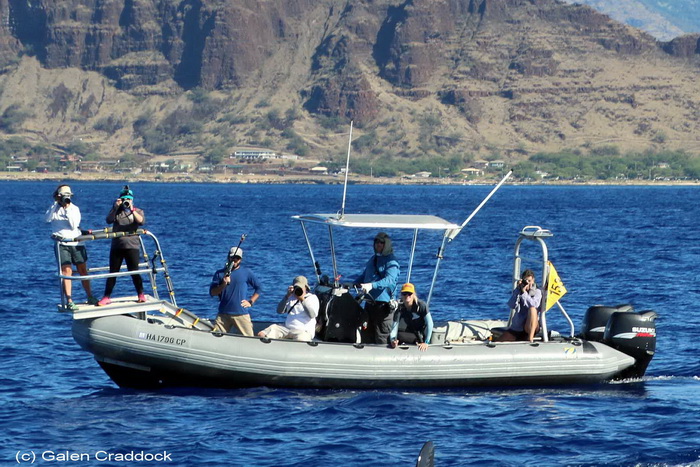
The research vessel we’ll be using for this project, a 24’ Hurricane. Photo by Galen Craddock
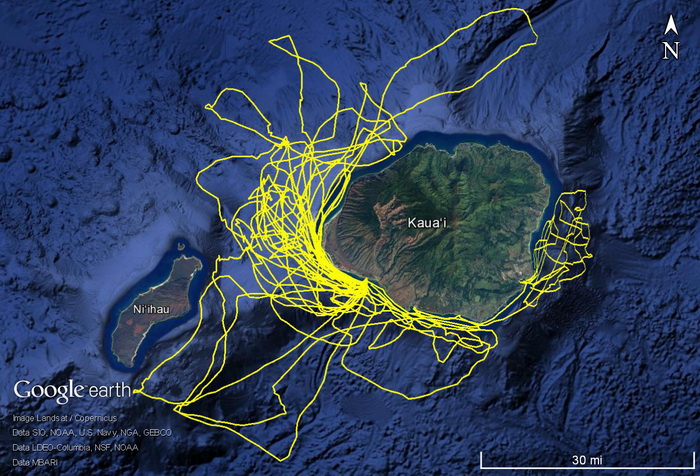
This map shows our vessel tracklines for three field projects, in February 2015, September 2015, and February 2016.
Photos on this page were taken under NMFS ESA/MMPA Permit No. 20605. Please contact Robin Baird (rwbaird (at) cascadiaresearch.org) for photo use or more information.
For updates from our prior field projects check out this page.